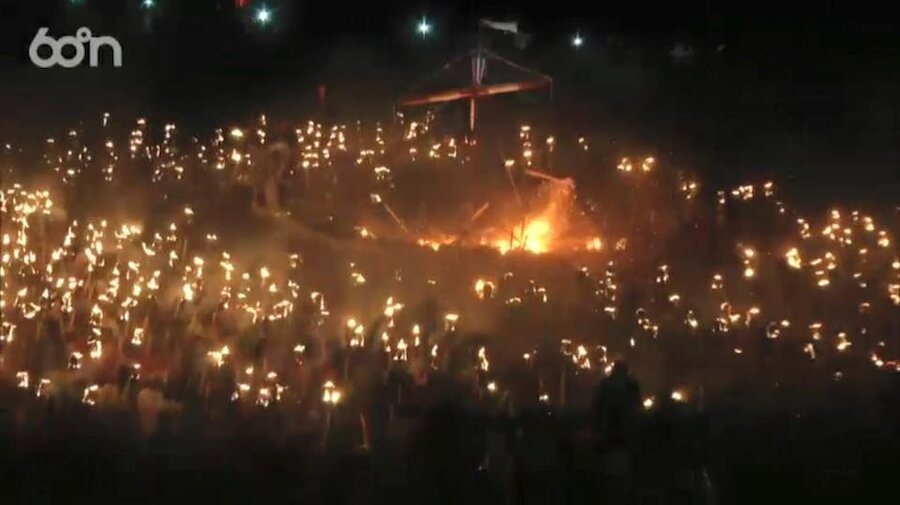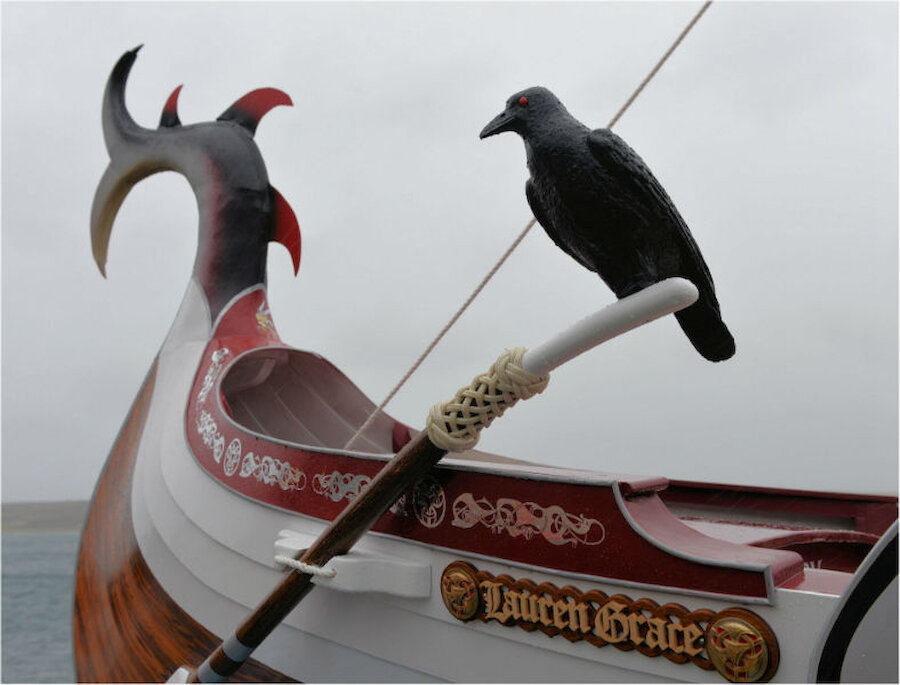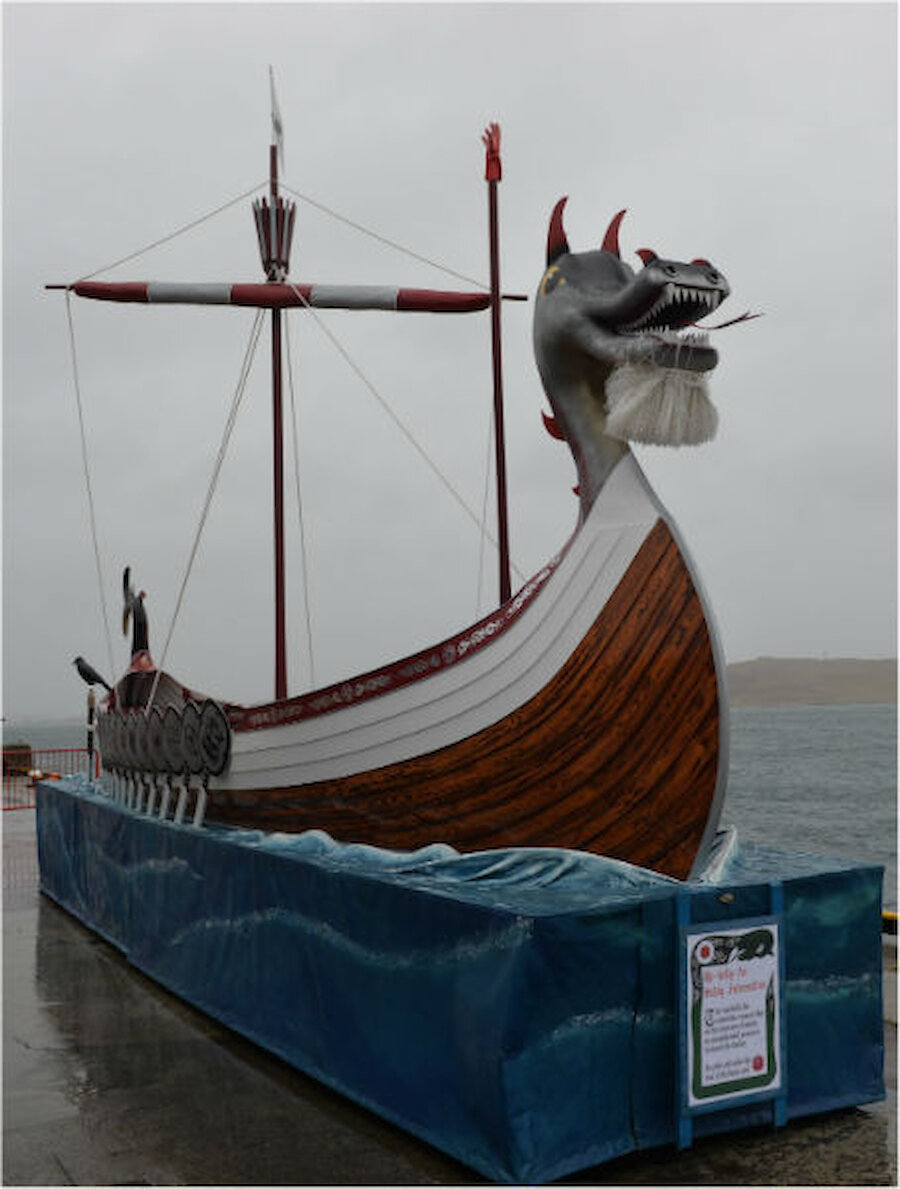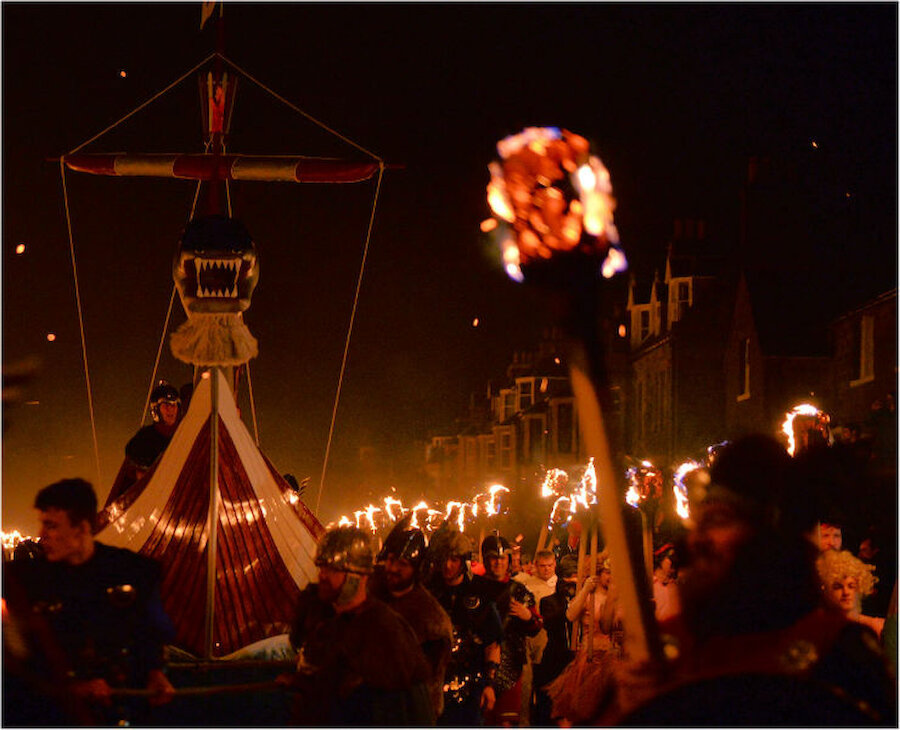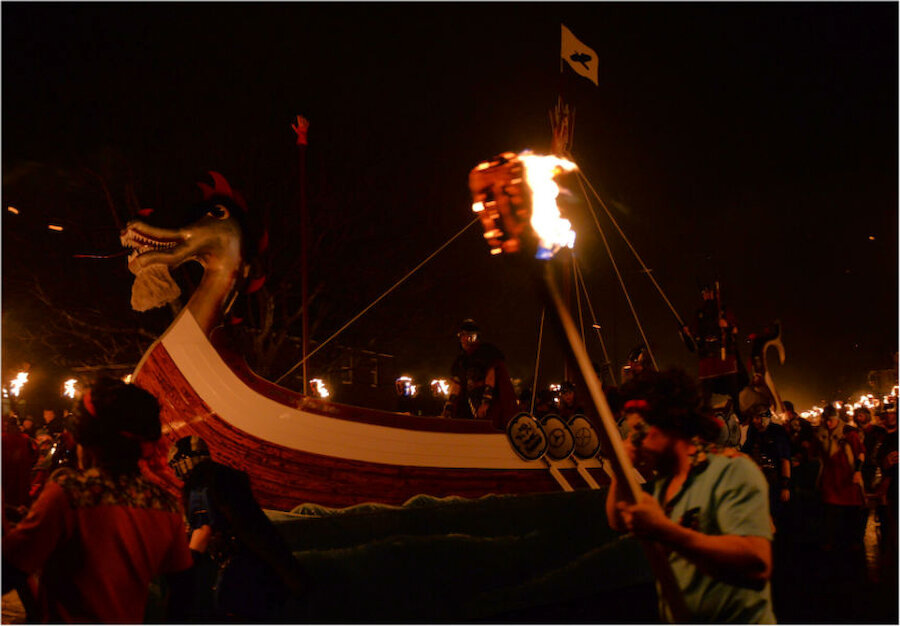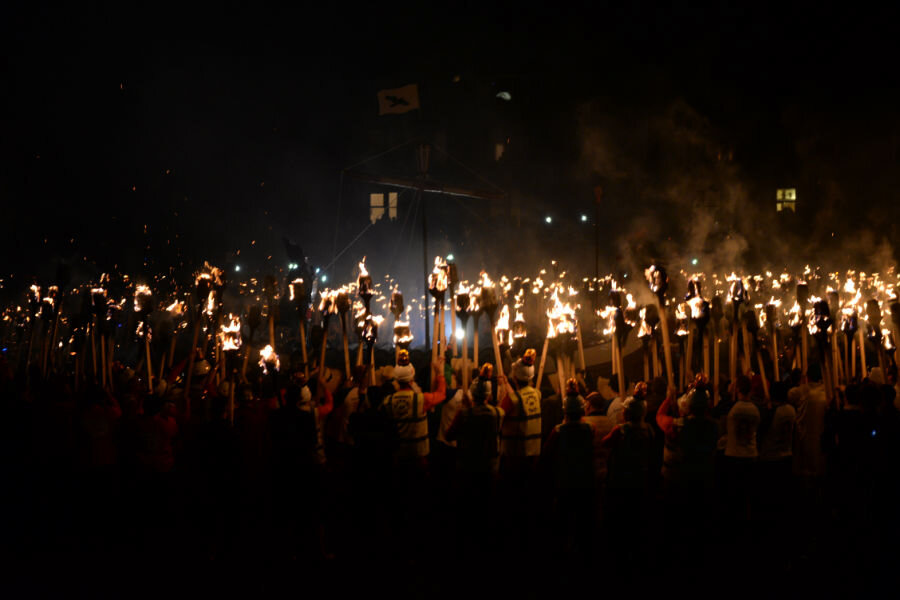The first three months of the year see fire festivals take place throughout Shetland, but the largest by far is Lerwick’s Up Helly Aa. This year, the day dawned grey, wet and windy, but hardy Norsemen’s spirits are never dampened by a bit of rain: ‘there will be no postponement for weather’ says the programme. They were rewarded, later, as the rain vanished in time for the start of the evening procession, making way for a starry night. Thousands of spectators, including hundreds of visitors, lined the route. Many thousands more around the world watched on the live stream provided by 60 North Television.
‘there will be no postponement for weather’
Up Helly Aa has a connection, at least in name, with the celebrations of Up Helly Night that, in rural Shetland, once marked the 24th day after Christmas, a point in the year at which the days have perceptibly lengthened. The Lerwick festival has its roots in rowdy celebrations held around Christmas or New Year which involved gangs of young men roaming the town’s narrow main street with burning barrels of tar.
By the late 19th century, the tar-barrelling had become so dirty and dangerous that a more organised event was developed. The name, Up Helly Aa, was coined and a torchlit procession was introduced, with guizers – men in disguise – touring the homes of friends and family afterwards. It seems that the occasion of the laying of the foundation stone of the Lerwick Town Hall, in 1881, may have been the first time that all these elements came together in a way that we would recognise today.
By the late 19th century, the tar-barrelling had become dirty and dangerous
After breakfast, the Jarl’s Squad, this year numbering 54, parade through the old town. The Galley is meanwhile positioned on the waterfront, where its fine detail can be admired and a group photograph is taken. The men are then given the freedom of Lerwick for 24 hours in a ceremony at the Town Hall.
They then visit schools, care homes and the museum before they are joined by more than 900 other guizers when the procession assembles on the Hillhead. The torches are lit from flares – a spectacular moment in itself – and the 977 guizers then wend their way around the streets of Lerwick’s 19th century ‘new town’, hauling the galley to the burning site. They’re accompanied by the Lerwick Brass Band, which plays the Up Helly Aa song and other lively tunes, and the Lerwick Pipe Band brings up the rear.
After the burning, the various squads – 47 of them this year – head off to visit all the 11 halls – run by teams of local hosts and hostesses – where they perform some kind of skit or musical routine in each. Proceedings don’t conclude until around 8am on the following morning. Needless to say, the Wednesday is a public holiday in Lerwick.
Proceedings don’t conclude until around 8am on the following morning.
Up Helly Aa is an extraordinary event. The procession and burning is the best-known and most spectacular element, but the community effort that goes into the whole festival, and the degree of organisation that is needed to make it all run like clockwork, are astonishing. You can find out more on the official Lerwick Up Helly Aa website and there’s a list of all the fire festivals at the bottom of this web page. For more photographs, we recommend David Gifford’s collection and the several galleries on Austin Taylor’s events page, which include some of the rural fire festivals as well as Lerwick’s.
...the community effort and the degree of organisation are astonishing...


